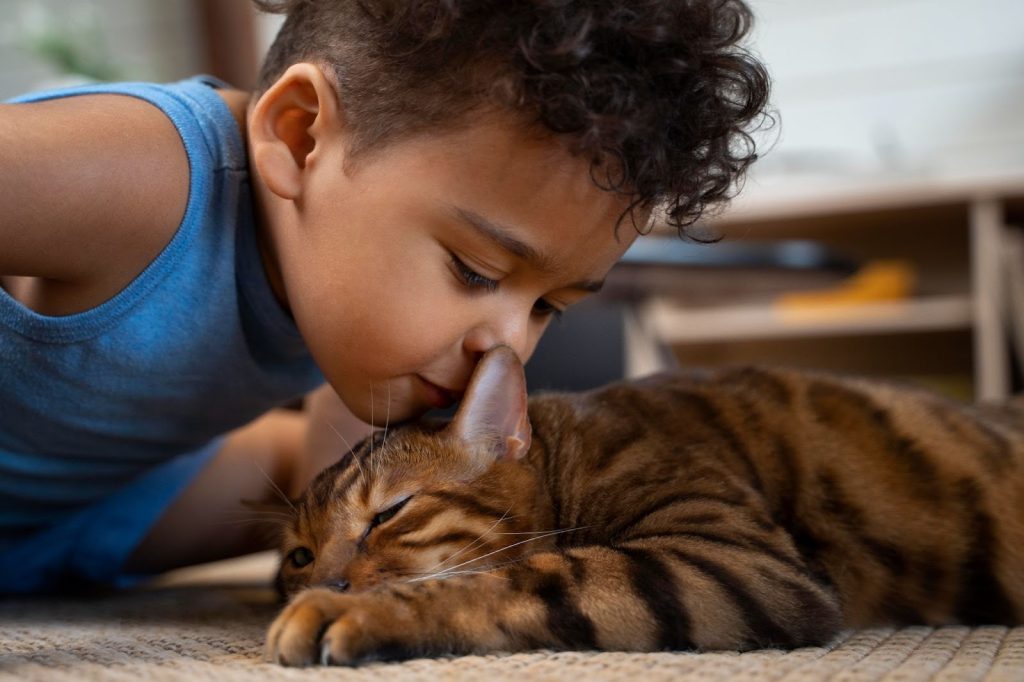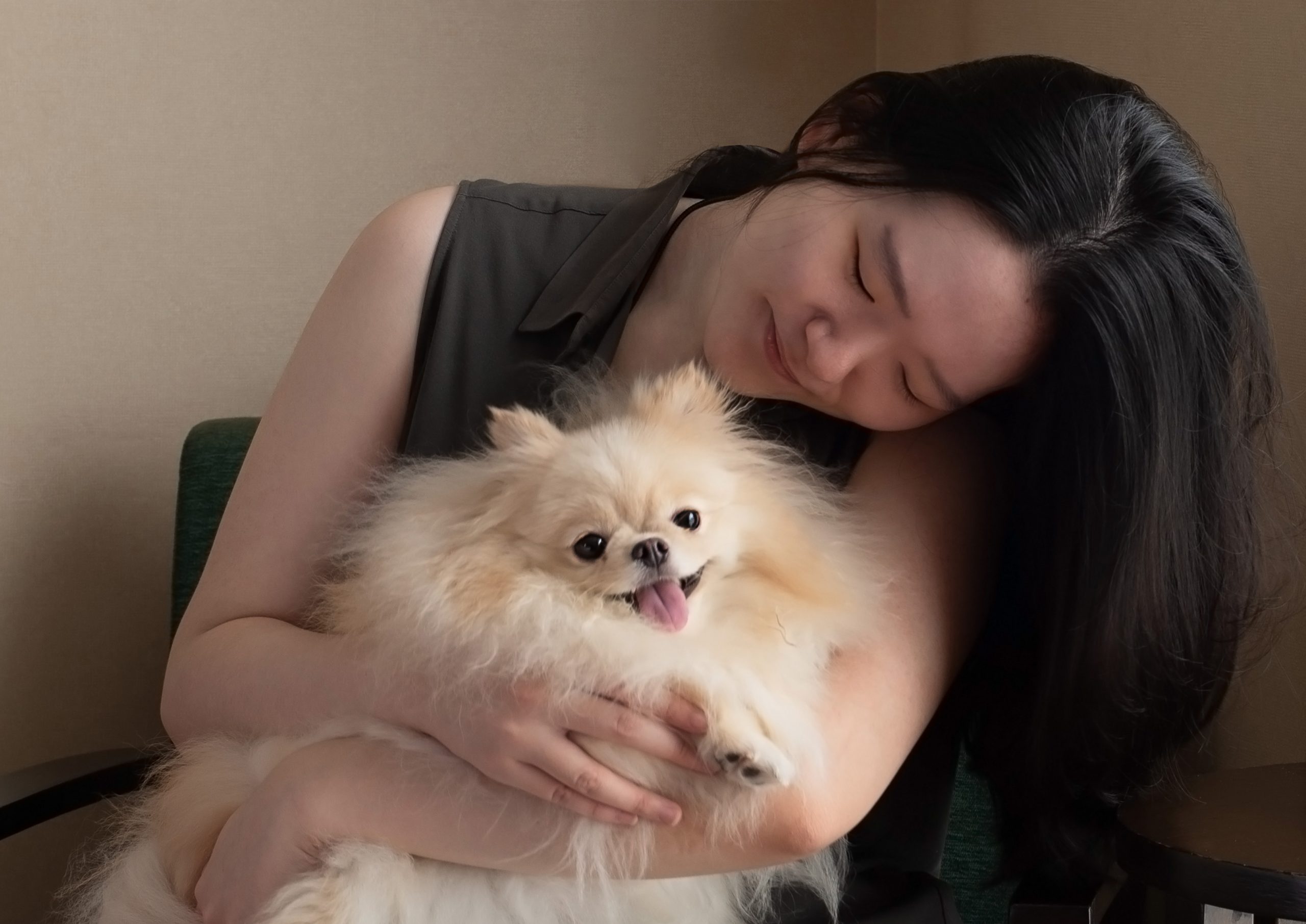Our pets have their own unique ways of showing love. While they can’t express it in words, their actions and behaviors often convey more than we realize. As responsible pet parents, learning to recognize and respond to these gestures helps strengthen the bond we share with them.
Here’s a closer look at how dogs and cats show affection—and how we can return that love in ways they understand!
For Dogs
Physical Touch
A wagging tail, a gentle lean, or an excited jump are your dog’s ways of seeking affection. Touch provides comfort and reassurance, reminding them that they are safe and loved.
Quality Time
Whether through a morning walk, a quick game of fetch, or quiet time together, dogs value your presence above all! Shared moments build trust and connection.
Acts of Service
Routine care—like grooming, bathing, or preparing their favorite Maxime meal—shows your commitment to their well-being. To them, this consistency is love in action.
Words of Affirmation
Your tone matters. Even if they don’t understand every word, your warmth and encouragement show them they are doing well and that they belong.
Gift Giving
That slipper or toy they proudly bring to you? It’s their way of sharing something meaningful—a small gesture that says, “You’re part of my pack.”
For Cats

Physical Touch (on their terms)
Cats express affection through gentle head bumps, body rubs, or quiet moments on your lap. Respecting their boundaries while accepting their affection builds mutual trust.
Quality Time
Cats value presence more than attention. Simply being near you—resting, watching, or following you from room to room—is their way of showing companionship.
Acts of Service
Meeting their needs, from keeping their space clean to serving their preferred Maxime meal, communicates care and reliability.
Words of Affirmation
A calm, steady voice helps cats feel secure. Soft tones provide comfort and respect, creating a peaceful environment.
Gift Giving
Those unexpected “presents” they leave behind may seem strange, but in their world, it’s a token of affection—a way of saying, “You’re family.”
Every pet speaks love differently. What matters most is that we listen, observe, and respond with the same care they give us each day. After all, the strongest bonds are built on understanding—and love that’s returned in kind.
FAQs:
- Can pets really feel and express love like humans do?
Yes. While pets express affection differently, research shows that dogs and cats form deep emotional bonds with their humans. Their behaviors—like tail wagging, purring, following you around, or bringing “gifts”—are genuine signs of attachment and trust. - How can I tell if my dog or cat feels secure and loved?
A secure pet often appears relaxed in your presence, maintains eye contact, eats well, and seeks interaction on their own terms. Consistency in care, gentle handling, and positive reinforcement help them feel safe and valued.
- What’s the best way to return my pet’s affection?
Understand and honor their individual love language. Some pets crave touch or play, while others prefer quiet companionship. The best response is patience—showing care in ways that align with their comfort and personality.
- How does proper nutrition help strengthen the bond with my pet?
A healthy pet is a happy pet. Providing complete and balanced nutrition—like Maxime, formulated for every life stage—shows care and consistency. Meeting their physical needs builds trust, allowing emotional bonds to grow naturally.
- Why is understanding my pet’s “love language” important?
Learning to recognize and respond to your pet’s unique ways of showing love helps strengthen the bond you share, so you #LiveTheBestLifeTogether! It allows you to return their affection in ways they truly understand, fostering trust and connection.




